You’ll also want to avoid all other products made with that ingredient. It means you have to take great care in reading labels and choosing foods and drinks. If your symptoms are very mild, you may have a food sensitivity rather than a true allergy. It can be uncomfortable, but it’s not an immune system response and isn’t as serious.
Why drinking alcohol will make your hay fever worse – Cosmopolitan UK
However, if you have a serious reaction or severe pain, see your doctor. Also, if your symptoms seem to be linked to an allergy or a medication you’re taking, see your doctor. Hence, drinking before bed can cause sleep disruptions later in your sleep cycle and lead to insomnia symptoms over time. Because alcohol is a potent diuretic, it can quickly dehydrate you, leading to the characteristic symptoms of a hangover, including a throbbing headache.
Skin prick test
In this article, we’ll explore why drinking alcohol commonly leads to a stuffed up nose for so many people. More importantly, you’ll discover actionable ways to stop alcohol from inflaming nasal passages so you can avoid the dreaded stuffy nose hangover. It may be due to an allergy to various ingredients in alcoholic beverages, such as grains, wheat, barley, hops, sulfites and yeast. Additionally, alcohol can cause a histamine reaction, triggered by the body’s immune system when it comes into contact with the allergen.
Even a small amount of alcohol can trigger a severe reaction. Read the ingredient lists of foods and drinks, ask restaurant staff for information about menu items, and avoid products that contain alcohol. This incomplete processing of the alcohol can cause the body to react by producing symptoms that reflect an allergy to the alcohol. People with this gene deficiency suffer two-fold from allergic symptoms to alcohol.
If you’re allergic to any of the ingredients in a mixed drink, you may want to avoid it. I’ve seen the serious effects of a true alcohol allergy firsthand. One of my customers, let’s call him Jeff, had to be rushed to the hospital after going into anaphylactic shock from just a sip of beer. With an intolerance, the symptoms are uncomfortable but not as serious. One older study in people with asthma found that over 40 percent of participants said that drinking alcohol prompted allergy or allergy-like symptoms. If someone has a true allergy to alcohol, they should avoid the substance entirely.
- The body produces antibodies, and when they encounter alcohol, they set off a systemic allergic reaction.
- The immune system usually produces antibodies to fight harmful substances in the body.
- In addition, a severe reaction called anaphlyaxis can occur.
- Doing a test can confirm or deny the actual cause of the alcohol intolerance.
- If you’re not consciously keeping track of the drinks you’ve chugged, it’s easy to go over these limits.
For example, if wine makes you sneeze, try drinking vodka or gin instead. Likewise, if beer makes you sneeze, try drinking vodka or gin instead. And if cocktails make you sneeze, try making your own with fresh fruit juices instead of pre-made mixes.
When To Call the Doctor
The amounts of histamine vary between wines, but generally, there is more histamine in red than white wine. An alcohol allergy can occur when a person with an alcohol allergy comes into contact with alcohol, which is also known as ethanol. Red wine tends to have higher levels of histamine than white wine or beer. You’re more likely to have allergies if you have a family history of allergies. A personal or family history of asthma also increases your chances of developing an allergy. In the United States, about 2 to 3 percent of adults have some type of food allergy.
Alcohol suppresses rapid eye what famous person has fetal alcohol syndrome? movement, or REM sleep, which is an essential restorative stage of sleep your body requires. And since alcohol is a diuretic, you’ll probably visit the bathroom more frequently at night, which can significantly hinder sleep. Alcohol can deprive you of the energy and mental focus you need to go through the following day.
People with this condition usually experience swelling in the lymph nodes in areas including the neck, armpits, or groin. Alcohol allergy symptoms can range from mild, such as an itchy mouth or eyes, to severe, including vomiting or anaphylaxis. The immune system overreacts to this exposure in the body, treating alcohol as a threat. The body produces antibodies, and when they encounter alcohol, they set off a systemic allergic reaction. We will also look at what causes alcohol allergies and review the differences between alcohol allergy and intolerance.
You’ll also want to avoid all other products made with that ingredient. It means you have to take great care in reading labels and choosing foods and drinks. If your symptoms are very mild, you may have a food sensitivity rather than a true allergy. It can be uncomfortable, but it’s not an immune system response and isn’t as serious.
Why drinking alcohol will make your hay fever worse – Cosmopolitan UK
However, if you have a serious reaction or severe pain, see your doctor. Also, if your symptoms seem to be linked to an allergy or a medication you’re taking, see your doctor. Hence, drinking before bed can cause sleep disruptions later in your sleep cycle and lead to insomnia symptoms over time. Because alcohol is a potent diuretic, it can quickly dehydrate you, leading to the characteristic symptoms of a hangover, including a throbbing headache.
Skin prick test
In this article, we’ll explore why drinking alcohol commonly leads to a stuffed up nose for so many people. More importantly, you’ll discover actionable ways to stop alcohol from inflaming nasal passages so you can avoid the dreaded stuffy nose hangover. It may be due to an allergy to various ingredients in alcoholic beverages, such as grains, wheat, barley, hops, sulfites and yeast. Additionally, alcohol can cause a histamine reaction, triggered by the body’s immune system when it comes into contact with the allergen.
Even a small amount of alcohol can trigger a severe reaction. Read the ingredient lists of foods and drinks, ask restaurant staff for information about menu items, and avoid products that contain alcohol. This incomplete processing of the alcohol can cause the body to react by producing symptoms that reflect an allergy to the alcohol. People with this gene deficiency suffer two-fold from allergic symptoms to alcohol.
If you’re allergic to any of the ingredients in a mixed drink, you may want to avoid it. I’ve seen the serious effects of a true alcohol allergy firsthand. One of my customers, let’s call him Jeff, had to be rushed to the hospital after going into anaphylactic shock from just a sip of beer. With an intolerance, the symptoms are uncomfortable but not as serious. One older study in people with asthma found that over 40 percent of participants said that drinking alcohol prompted allergy or allergy-like symptoms. If someone has a true allergy to alcohol, they should avoid the substance entirely.
- The body produces antibodies, and when they encounter alcohol, they set off a systemic allergic reaction.
- The immune system usually produces antibodies to fight harmful substances in the body.
- In addition, a severe reaction called anaphlyaxis can occur.
- Doing a test can confirm or deny the actual cause of the alcohol intolerance.
- If you’re not consciously keeping track of the drinks you’ve chugged, it’s easy to go over these limits.
For example, if wine makes you sneeze, try drinking vodka or gin instead. Likewise, if beer makes you sneeze, try drinking vodka or gin instead. And if cocktails make you sneeze, try making your own with fresh fruit juices instead of pre-made mixes.
When To Call the Doctor
The amounts of histamine vary between wines, but generally, there is more histamine in red than white wine. An alcohol allergy can occur when a person with an alcohol allergy comes into contact with alcohol, which is also known as ethanol. Red wine tends to have higher levels of histamine than white wine or beer. You’re more likely to have allergies if you have a family history of allergies. A personal or family history of asthma also increases your chances of developing an allergy. In the United States, about 2 to 3 percent of adults have some type of food allergy.
Alcohol suppresses rapid eye what famous person has fetal alcohol syndrome? movement, or REM sleep, which is an essential restorative stage of sleep your body requires. And since alcohol is a diuretic, you’ll probably visit the bathroom more frequently at night, which can significantly hinder sleep. Alcohol can deprive you of the energy and mental focus you need to go through the following day.
People with this condition usually experience swelling in the lymph nodes in areas including the neck, armpits, or groin. Alcohol allergy symptoms can range from mild, such as an itchy mouth or eyes, to severe, including vomiting or anaphylaxis. The immune system overreacts to this exposure in the body, treating alcohol as a threat. The body produces antibodies, and when they encounter alcohol, they set off a systemic allergic reaction. We will also look at what causes alcohol allergies and review the differences between alcohol allergy and intolerance.

This interactive map shows the annual average alcohol consumption of alcohol, expressed per person aged 15 years or older. To account for the differences in alcohol content of different alcoholic drinks (e.g., beer, wine, spirits), this is reported in liters of pure alcohol per year. This topic page looks at the data on global patterns of alcohol consumption, patterns of drinking, beverage types, the prevalence of alcoholism, and consequences, including crime, mortality, and road incidents. A qualified healthcare professional can diagnose whether a person’s substance use is problematic and meets the diagnostic criteria for mild, moderate, or severe substance use disorder listed in the DSM-5. Based on their assessment, they will work out a treatment plan for the person.

Treatment & Recovery Considerations
The analysis doesn’t fully account for a drug’s legality, accessibility, or how widely a drug is used. If heroin and crack were legal and more accessible, they would very likely rank higher than alcohol. The harm score for marijuana would also likely rise after legalization, but probably not too much since pot use is already widespread.
Prevalence of alcohol use disorders
- It would matter if marijuana ends up substituting alcohol once pot is legalized (since a safer substance would be replacing a more dangerous one), but the research on that is still early.
- That doesn’t mean just legalization or prohibition, but regulation, taxes, and education as well.
- Jon Caulkins, a drug policy expert at Carnegie Mellon University, gave the example of an alien race visiting Earth and asking which land animal is the biggest.
- However, considering worst-case scenarios (e.g. 5th percentile), heroin may have a lower MOE than alcohol (compare standard deviation bars in Figure 1).
- Seeking professional help early can prevent a return to drinking.
It is possible to switch this data to any other country or region in the world. Globally, the age-standardized death rate has declined from approximately 40 deaths per 100,000 alcohol vs drugs people in the early 1990s to 30 deaths per 100,000 in 2019. We also find correlates in drinking patterns when we look at groupings of income, education or work status.

The health impact of alcohol
The preoccupation stage refers to when a person becomes preoccupied with consuming alcohol next. According to Addiction Center, some of the effects of depressants are delayed reaction time, poor coordination, slurred speech, lessened inhibitions, cognitive impairments and distorted perception or judgment. Heavy drug use is never ideal — and marijuana is no different in this regard. Find a doctor at Weill Cornell Medicine to discuss your concerns with.
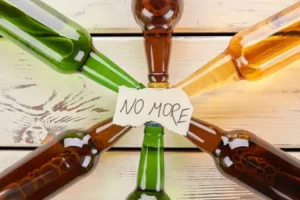
Although personal events and cultural factors affect drug use trends, when young people view drug use as harmful, they tend to decrease their drug taking. Therefore, education and outreach are key in helping people understand the possible risks of drug use. Teachers, parents, and health care providers have crucial roles in educating young people and preventing drug use and addiction. As with most other chronic diseases, such as diabetes, asthma, or heart disease, treatment for drug addiction generally isn’t a cure.
- In contrast, the risk of alcohol may have been commonly underestimated.
- The vast majority of alcohol in the United States is consumed by the top 10 percent.
- While not all addiction causes the same feelings or withdrawal symptoms, all substance abuse stems from similar sources, such as the desire to numb physical or emotional pain.
- Finally, the sensitivity analysis results from application of human toxicity data for some of the compounds (alcohol, nicotine and THC21,55,56,57) are shown in Supplementary Table S3 online and marked in Figures 1–3.
That study has drawn widespread media attention, appearing in outlets like the Washington Post, the Guardian, the New Republic, and here at Vox. At nearly every party I attend I’m offered alcohol, the drug most likely to kill an American. No one would dare offer me meth or cocaine (well, https://ecosoberhouse.com/ this is Los Angeles, so maybe cocaine). That means we don’t teach anyone how to consume it responsibly, even though most drinkers start drinking long before they reach the 21-year age limit. In the chart, we see death rates in the United States from overdoses of different drugs.

Medications also can help deter drinking during times when individuals may be at greater risk of a return to drinking (e.g., divorce, death of a family member). According to a survey by SAMHSA, over 40% of alcohol users in the United States are classified as binge drinkers and 28% of those binge drinkers are classified as heavy drinkers. In 2019, over 14 million people ages 12 or above had an alcohol use disorder. But how much does all of this information really tell policymakers or the public? It would matter if marijuana ends up substituting alcohol once pot is legalized (since a safer substance would be replacing a more dangerous one), but the research on that is still early. This may seem like a petty academic squabble, but it’s quite important as researchers and lawmakers try to advance more scientific approaches to drug policy.
Why do some people become addicted to drugs while others don’t?
Below, O’Neill outlines some steps that can help prevent substance use and substance use disorder. That includes what you’ll do if the intervention doesn’t change your loved one’s mind. Working with an addiction or intervention specialist can often be helpful, but some people arrange interventions on their own without professional help. If you’re under 30, this grassroots organization, which offers life skills, community chapters, and an opportunity to reduce the stigma around abuse issues, could be a good fit. You can join no matter what belief system you have, or if you don’t have one at all.
- Although drug policy experts generally don’t dispute the assertion that alcohol is more dangerous than pot, the study, led by British researcher David Nutt, is quite controversial.
- For instance, is there a treatment program you want your loved one to sign up for?
- Medications also can help deter drinking during times when individuals may be at greater risk of a return to drinking (e.g., divorce, death of a family member).
- As the map shows, the average per capita alcohol consumption varies widely globally.
Alcohol use disorder treatment
If you’re worried about your substance use and think you might be at risk for a substance use disorder, the best thing to do is to seek help and information, says O’Neill. “There are many counselors, coaches, and support group meetings that can help you understand and learn more about it. Treatment involves a professional assessment and treatment plan to meet the person’s individual needs for sustained recovery, says O’Neill. «The treatment plan can vary depending on several factors, such as severity of use and the person’s resources and sources of support.»
The disease burden from alcohol use disorders
Drinking an extreme amount of alcohol, also known as alcohol poisoning, can be fatal. If you’re younger than 18, pregnant, or nursing, harm reduction isn’t a good option. You can choose from different types of therapy such as alcohol counseling, cognitive behavioral therapy, mindfulness-based therapy, or couples or family therapy. Treatment, which can include therapy, medication, and connecting with others for support, can help you recover. If you are concerned about your alcohol use and would like to explore whether you might have AUD, please visit the Rethinking Drinking website.
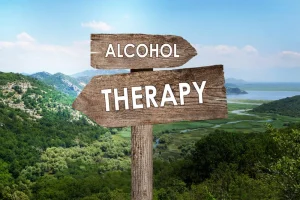
Behavioral intervention is considered a first-line approach in the treatment of PTSD. Several empirically supported behavioral interventions have been disseminated across populations and treatment settings. As with treatments for AUD, various treatment modalities for PTSD have been studied. The second serotonin reuptake inhibitor study used a 2 X 2 designed and evaluated paroxetine (40 mg) with an active control, the noradrenergic antidepressant desipramine (200 mg) (Petrakis et al. 2012).
Alcohol and Trauma: Drinking as a Way to Cope with the Past
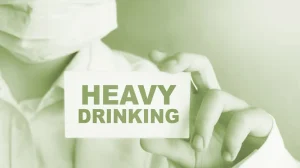
Second, because this study focused on coping-related drinking motives, we excluded other relevant mediators that could support the self-medication hypothesis (such as “avoidant” coping, “maladaptive” coping; alcohol expectancies; negative urgency; and emotion regulation). We also excluded measures of coping that assessed ‘coping through substance abuse’ more broadly since we could not be sure that the substance being used was alcohol. Integrated treatment that addresses both disorders is important to begin recovery.Treatment for co-occurring PTSD and alcohol use disordersmay include bothindividual therapy and group therapy.
- The reasons for these differences are likely not due to significant methodologic differences as outlined above.
- However, it is also possible that compared to daily PTSD, overall PTSD severity is a more sensitive marker for the negative impact of PTSD on functioning and perceived effects of alcohol use.
- Most of the veterans showed clinically reliable reductions in their percentage of days of heavy drinking.
- These results were the opposite of what we expected based on a tension-reduction theory of alcohol use.
Getting Help for PTSD and Alcohol Problems
- Many people with PTSD self-medicate with alcohol because it temporarily makes them feel better.
- Because these two issues are so intimately connected, it is essential that treatment address them both.
- If you have PTSD, plus you have, or have had, a problem with alcohol, try to find a therapist who has experience treating both issues.
- People seeking co-occurring PTSD and alcoholism treatment need to work with treatment professionals experienced in PTSD and alcohol treatment.
Alcohol problems are more common for those who experience trauma if they have ongoing health problems or pain. Another similarity between learned helplessness as seen in animal models and PTSD is the co-occurrence of excessive alcohol consumption. In an experiment in which some rats were exposed to shocks they could escape from and others were exposed to shocks that were inescapable, rats that were presented with inescapable shocks increased alcohol preference compared with rats that received escapable shocks (Volpicelli 1987; Volpicelli and Ulm 1990). The rats’ alcohol consumption did not increase on the days that they experienced the shocks, however, but did increase 1 day later. Research in the past quarter century has shown that experiencing trauma does not necessarily lead to psychopathology.
Treatment Must Address Both PTSD and Drinking.
Additionally, we conducted univariate analyses to avoid over parametrizing our model. As a result, there is likely overlapping variance in our study that remains unaccounted for. Additionally, we found evidence for a file-drawer effect ptsd blackouts via the one study removed analysis. Results suggest that 22 studies would have to exist with null findings in order to reduce the size of the indirect effect by 50%.
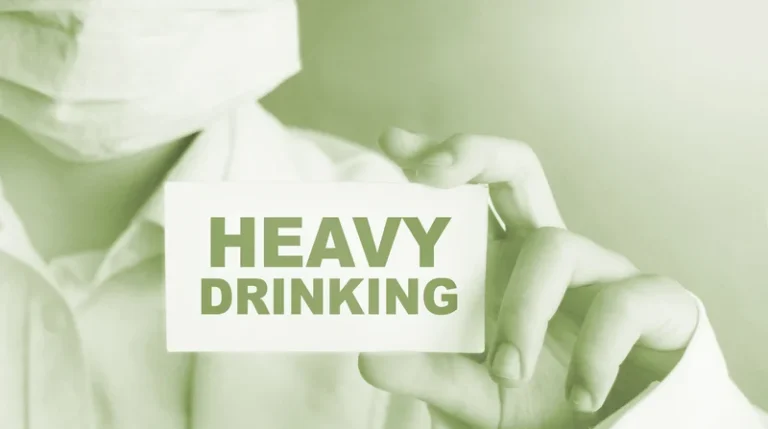
Bivariate analysis of gender and binge and hazardous drinking (Table
This score was then aggregated and averaged across observations to yield a person mean. Participants completed an initial phone screen and then came into the lab where they provided written informed consent, underwent further screening for study inclusion, and a baseline assessment consisting of interview and self-report measures. Participants received instruction on the telephone daily Interactive Voice Response (IVR) protocol. All study procedures were approved by the VA Puget Sound Health Care System Human Subjects Division Internal Review Board.
Compared to those with PTSD or AUD alone, individuals with this comorbidity often have a more severe symptom expression of both conditions (Blanco et al., 2013), poorer levels of psychosocial functioning (Straus et al., 2018), and a higher risk for suicide (Norman et al., 2018). In addition to the psychological ramifications of harmful alcohol use, the societal cost of excessive consumption is significant, including a 249 billion dollar estimate for the U.S. government in 2010 (Sacks et al., 2015). Thus, the pervasiveness, severity, heavy disease burden, and high societal cost of this comorbidity highlights the importance of understanding its etiology. By studying the relationship between PTSD and harmful alcohol use, researchers may work towards developing treatment approaches and prevention efforts for those with this comorbidity. A combination of psychotherapy and pharmacotherapy may be an effective treatment strategy for service members and veterans with comorbid PTSD and AUD.
Future research in this area should also consider using a more trauma-informed measure of coping-related drinking motives, such as the recently developed Trauma Related Drinking Questionnaire (TDR). This measure assesses the desire to drink in response to four PTSD symptom clusters. Psychometric research on the TDR suggests that it is a more specific measure than the DMQ coping subscale, whose questions focus on depression and anxiety more generally (Hawn, Aggen, et al., 2020). It is also clear from the moderator analyses we described that the effect of self-medication will vary widely based on multiple domains, and that there are likely to be subsets of individuals who do not drink to cope with their internal emotional states at all. For these individuals, other relevant theories such as the high-risk hypothesis or the shared vulnerability hypothesis may be more relevant.


However, neither of these studies found an advantage for sertraline over placebo for alcohol use outcomes. Interestingly the noradrenergic antidepressant desipramine was as effective as the serotonergic paroxetine for PTSD and desipramine had other advantages in alcohol use outcomes. Prazosin was effective in decreasing alcohol use in one study (Simpson et al. 2015) but not in the other larger trial (Petrakis et al. 2016); prazosin was not effective in treating PTSD symptoms in either study evaluating its efficacy. The neurokinin-1 receptor antagonist aprepitant had no effect on PTSD symptoms or alcohol craving (Kwako et al. 2015). There is a small but growing literature of pharmacotherapies to treat AUD with comorbid PTSD. The conclusions from this review suggest that there is not one agent that has clear evidence of efficacy in this comorbid group.
For instance, the Sober Living Foundation offers grants to eligible homeowners to help run the facility, although these typically require upfront payment and subsequent proof of expenses. Grant proposals must be persuasive, detailing the home’s objectives, services provided, and community impact to increase the likelihood of funding approval. Additionally, sober living homes participating in research or training may be eligible for funding from organizations like the National Institutes of Health (NIH). One place to start looking to find a sober living home or facility is a Google search for something such as “sober living houses near me” or “sober house in” followed by your city and state.
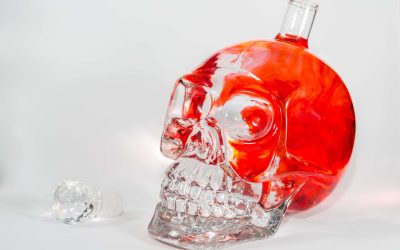
Insurance Coverage Limitations and Exclusions
Sober living homes are for people who https://www.holidaybookr.com/StPetersburg/ have completed a treatment program but need additional support to sustain long-term recovery. Many sober living homes also require residents to pay weekly rent following a one-time move-in fee, according to Robilio. Halfway houses fall under the umbrella term “sober living home,” as both terms refer to residences where people in recovery stay before going back to living on their own, says Dr. Kennedy. Read on to learn more about sober living houses, including how they function, whether one may be right for you or a loved one and how to find a reputable facility in your area.
How Much are the Costs for Long-term Residents at Archway Recovery Homes?

Sober living homes don’t require accreditation, a state license or oversight from a behavioral health care provider. The lack of regulation has led to the creation of homes that lack access to support services or strict http://suicideboys.ru/%d0%b1%d0%b5%d0%b7-%d1%80%d1%83%d0%b1%d1%80%d0%b8%d0%ba%d0%b8/i-went-to-an-online-sex-party-during-the-coronavirus-pandemic/ rules. Studies indicate that living in sober homes after inpatient treatment increases recovery rates, financial strength and overall stability. An average day at a sober living home usually includes group breakfasts, lunches and dinners.
- Landlords countered that regulation increased rents of unregulated apartments, restricted building upkeep and discouraged new construction.
- While sober living homes do not provide the level of medical intervention, they help individuals stay sober with additional support and structure at a more affordable price.
- It provides a safe environment for people to focus on their recovery after substance abuse treatment.
- To apply for most government assistance programs, individuals can visit official state websites, call designated phone lines, or use resources like USA.gov’s Benefit Finder for guidance.
- The cost may vary depending on the location, size, and amenities of the sober living home.
- Quitting alcohol and drug abuse can be a challenging, arduous process.
Does Insurance Cover Sober Living?
If you have completed an addiction treatment program and would like help transitioning back into your everyday life, a sober living home may be helpful for you. Here you will find information about sober living houses, what they do, and how you, or your loved one, can take full advantage of the support on offer and enjoy a life free from addiction. While this will vary per facility, most residents can stay in a sober living house as long as they abide by the house rules and regulations. Most sober living homes are privately run and not government-funded, but financing options may be available. Some residents have family members or friends to help them pay for sober living.
Compare The Cost Of Sober Living House to Rehab Centers
We strive to create content that is clear, concise, and easy to understand. Residents should choose a payment method that ensures timely and secure transactions, keeping in mind any additional fees or charges that may apply. Factors such as convenience, transaction speed, and record-keeping capabilities should be considered when selecting a payment method to maintain financial stability while in recovery. Individuals residing in sober homes often have various options to cover their living expenses.
What Is the Difference Between Sober Living and Addiction Treatment?
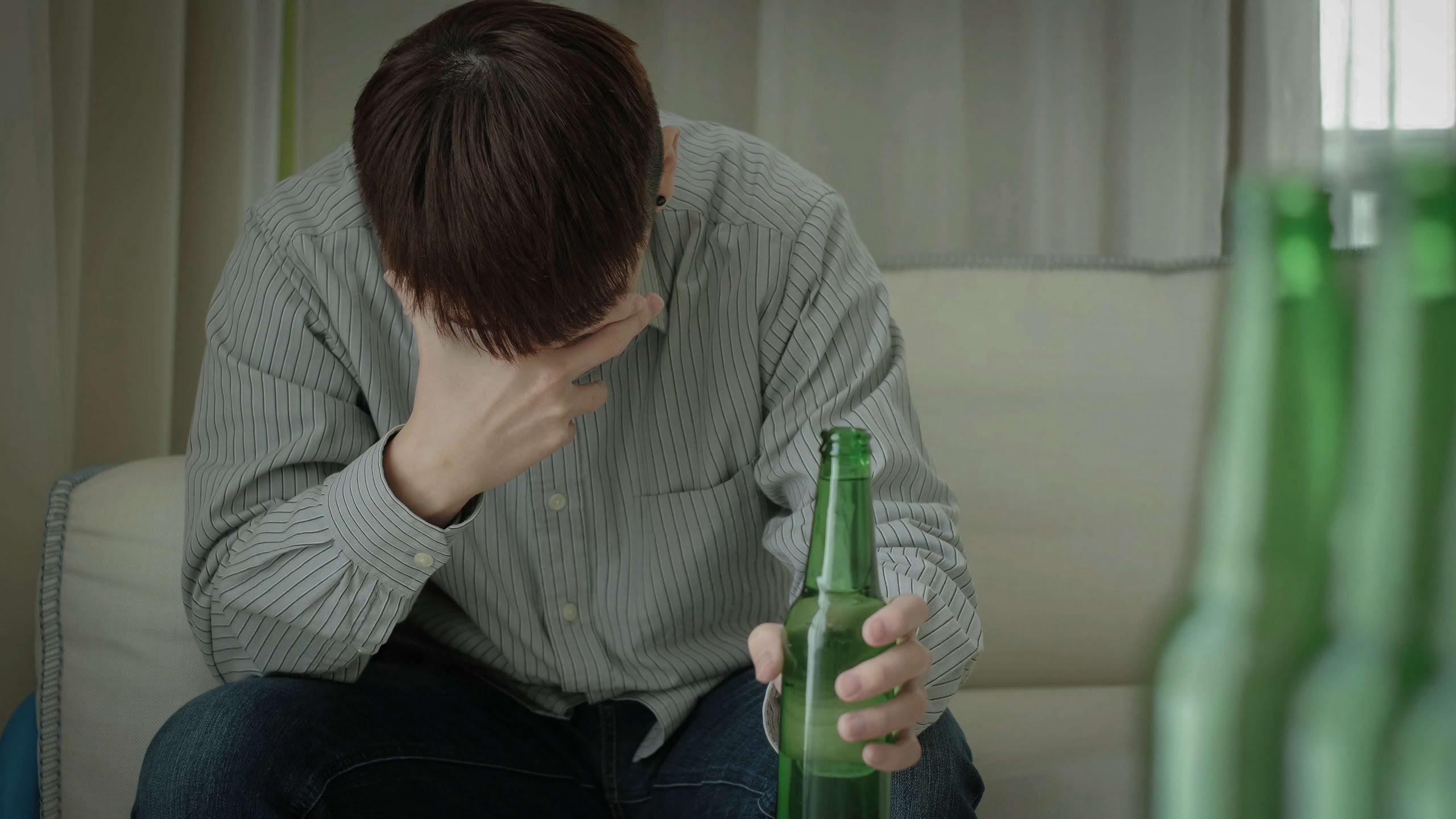
By encouraging a sense of http://www.rock-archives.ru/rock-archive/c/carcass/ community and togetherness, recovering people are motivated to bond with others, support each other, and continue sobriety to retain their place in the house. States that regulate these facilities require a maximum number of residents, often fewer than 10. These facilities are houses located in quiet neighborhoods, although they may sometimes be in apartment buildings. Cost largely depends on the mortgage for the home and the average rent in the area.
- Halfway houses date back to the 1830s when they housed children and adults that had committed crimes or had been released from prison.
- Sober living homes are places where someone in recovery can find independence while learning to seek and obtain community resources necessary for long-term recovery.
- Sober living houses are also called sober residences, recovery houses, and recovery residences, among other names.
- The regulatory apparatus is fractionalized, divided among three city and state agencies.
Top 7 Ways Sobriety Will Change Your Life
If you feel joining a sober living home would be beneficial, consider reaching out to your network for recommendations. Ask fellow members of support groups or other sober friends for tips. You could consider reaching out to staff at a rehabilitation center you have previously attended for a referral. This can help foster a sense of personal accountability in residents, encouraging them to take pride in a clean, healthy living environment. This can be contrasted with the messy, chaotic environments many addicts typically become accustomed to living in. They will be able to discuss the best available options and can help locate nearby locations.
Curious about how to write a project plan that keeps tasks on track and stakeholders satisfied? Much like snagging a ‘just in case’ umbrella on a cloudy day, your contingency plan gives you the reassurance that you have a backup plan — so you don’t end up caught in the rain. Think through all of the potential roadblocks, errors, and issues that could sabotage your project. In some industries, a contingency plan isn’t something that’s nice to have — it’s a must. Think of a pilot having to make an emergency landing or the hospitals that had to get clever to deal with overwhelming demand during the pandemic. If and when something falls apart in the middle of a project, figuring out what your other options are can leave you scrambling.
Project Management Contingency Plan Template
Having a structured template can be the difference between a swift recovery and prolonged downtime. Beyond the financial impact, consider reputational damage, legal consequences and employee morale. For instance, a data breach might result in fines, erode customer trust and lead to negative press coverage. These could include payroll processing, IT infrastructure or regulatory compliance activities (crucial for GDPR compliance). The gap highlights the need to create practical, well-communicated plans that are ready for execution. Integrating both approaches helps your business anticipate challenges and respond swiftly to them.
Disaster Contingency Plan
Contingency planning addresses the “what if” situations and develops a plan that will work around those situations. Risk management is a proactive approach that companies use to prevent loss or disasters. So rather than being reactive like a contingency plan, a risk management plan looks to stop adverse events from happening in the first place.
Step 2: create the contingency plan
Once the process list is created, consider what might disrupt business continuity. Looking at this list, you can see how vulnerable it is to natural disasters or even minor human errors. Having a contingency plan in place enables you to respond to the unforeseen more effectively, adapt to changing conditions, and recover from setbacks more efficiently. The stress tests project how much a bank would lose—if a negative economic event occurred—to determine if the bank has enough capital or funds set aside to survive the event.
- Sometimes it can be hard to justify the importance of putting resources into preparing for something that might never happen.
- Having executive support from the start ensures the plan put forth is approved and also can motivate those at the department level to buy-in as well.
- Whichever reason a contingency plan fits your company’s situations, make sure that it leads to everyone’s benefit.
- You want to make sure you have all the necessary information before drafting your plan, so this step should be the longest.
From there, start shaping your plan, which should include preventive controls, an incidence response plan, a disaster recovery plan, and a business continuity plan. Make sure to provide training to employees, frequent testing, and updating of your plan. Organizations build contingency plans to help them face a variety of threats, including natural disasters, unplanned downtime, data loss, network breaches and sudden shifts in customer demand. A business contingency plan is a backup strategy for your team or organization. Get step-by-step instructions to create an effective contingency plan, so if the unexpected happens, your team can spring into action and get things back on track. You can begin the contingency planning process by completing a contingency plan template so that you’re adequately prepared.
This project management contingency plan template is ideal for creating a comprehensive contingency plan for any type of project. Use this template to define risks and their events or triggers, consider budgetary implications, and define your potential plans of action. Keep tabs on your organization’s comprehensive business contingency plan (BCP) with this distinctive business contingency plan template. This BCP template is useful for determining accurate planning and courses of action to ensure the success of your business’s contingency plan. A contingency plan is a proactive strategy that describes the course of actions or steps the management and staff of an organization need to take in response to an event that could happen in the future.
Davidson says project leaders must be careful not to add too little contingency time — or contingency costs — to a project. contingency plan example For example, if a project is expected to take 200 hours, the team would add an additional 40 hours for contingency time. Experts sometimes recommend adding a rough estimate of contingency to projects.
It aims to foster responsible attitudes by designating a month of candid discussions and information sharing, while reaching out to the American public via community-sponsored awareness activities and campaigns designed to prevent alcoholism. If you feel you or a loved one may be struggling with alcoholism, don’t worry, you’re not alone. We understand how overwhelming it can be to consider seeking help for addiction and we’re here to take that burden off your shoulders. Our admissions navigators are available 24/7 to discuss your alcohol addiction treatment options and answer any questions you may have about the process. The NIAAA Alcohol Treatment Navigator can help you recognize and find high quality treatment for alcohol use disorder. If you drink excessively, seek medical help to plan a safe recovery as sudden abstinence can be life threatening.
Alcohol Awareness Month History and Background
- Most civilized societies around the world generally accept alcohol use, and the misuse of alcohol is fashionable within certain social situations.
- Binge drinking is when blood alcohol concentration comes to 0,08 g/dL, which happens when a man drinks five glasses and a woman drinks four in about two hours.
- The anxiety and inhibition-lowering properties are often seen as a positive side effect of alcohol, but alcohol comes with a long list of negative side effects.
- Even teens who would not normally be tempted to drink alcohol may be drawn in by certain social situations, so don’t assume they have all the facts they need to resist peer pressure.
Did you know that language commonly used to describe alcohol misuse and alcohol use disorder (AUD) can influence treatment outcomes in people suffering from alcohol problems? In fact, the stigma perpetuated by such language can decrease a person’s motivation to seek help for an alcohol problem. Contribution of excessive alcohol consumption to deaths and years of potential life lost in the United States.
If you want to discover even more substance use disorder stats, the 2022 NSDUH is free and available online. American Addiction Centers (AAC) is committed to delivering original, truthful, accurate, unbiased, and medically current information. Alcohol misuse is linked to an increased risk of several types of cancer, including liver, breast, esophagus, throat, mouth, and colon cancer. Under the influence of alcohol, individuals may engage in unprotected sex or make choices they otherwise wouldn’t, increasing the risk of sexually transmitted infections (STIs) and unintended pregnancies.
You and your community can take steps to improve everyone’s health and quality of life. We also point to evidence that stigma-related bias among clinicians can contribute to a treatment-averse mindset and to suboptimal clinical care, including failure to implement evidence-based treatment 2. Studies have shown that the use of clinically accurate language and terms that centralize the experience of patients reduces stigma, resulting in higher quality health care. The stigma also can affect one’s self-esteem, as well as how they are perceived by others. And, sadly, AUD is still often viewed as a moral failing or character flaw, rather than a chronic medical disorder from which people can—and do—recover. Less than 10 percent of people with AUD obtain treatment or help for alcohol problems.
Alcohol Awareness Month FAQs
Such research is critical in helping us to Alcohol Poisoning Symptoms & Treatment improve the diagnosis, prevention, and treatment of alcohol-related problems. Each month we highlight National Health Observances (NHOs) that align with our mission to improve health in the United States. In April, we’re raising awareness about minority health, alcohol awareness, and celebrating public health.We’ve gathered some resources below that you can use to join the conversation and spread the word about these NHOs with your networks! By raising awareness about alcohol misuse and abuse, communities, organizations, and health professionals can take action to prevent it, both at home and in the community.
Another strong start is to understand your key function as a role model when it comes to alcohol. Adolescents are less likely to drink heavily when the adults in their life demonstrate responsible behavior regarding their own alcohol use and when they live in homes where parents/guardians have specific rules against drinking at a young age. The role of parents in preventing underage drinking is paramount, as their attitudes and behaviors toward alcohol significantly influence their children’s perceptions and potential consumption habits.
Alcohol & Your Health
With this and other National Health Observance toolkits offered on healthfinder.gov, we’ve made it easier for you to make a difference. The toolkits provide resources for organizations like schools, health care providers, health departments, and more to raise awareness about critical public health issues, like the health risks of alcohol. In conclusion, Alcohol Awareness Month addresses the widespread issue of alcohol abuse and addiction. Its significance extends beyond the potential to save lives; it nurtures a healthier, more responsible drinking culture in our society. More NIAAA resources about drinking during adolescence are available on our underage drinking landing page, including resources for talking to kids about alcohol. Parents and other adults can make a difference in helping teens make the right decisions when it comes to alcohol and preventing underage drinking.
Reframing the way we talk and think about alcohol problems can encourage people to seek and receive the help they need to recover. By increasing public awareness and diminishing the stigma surrounding alcoholism, we pave the way for a supportive and empathetic environment for those afflicted. To help spread the messages related to National Alcohol Awareness Month, April, begin by immersing yourself in the subject. Read books, sift through articles, and analyze research studies to become well-versed in the dangers of excessive alcohol use, alcohol addiction, recovery, and preventative measures.
Learn how many people ages 12 to 20 engage in underage alcohol misuse in the United States and the impact it has. Common signs of alcohol addiction include drinking alone, drinking to cope with stress or emotions, experiencing withdrawal symptoms when not drinking, and neglecting responsibilities. As you build your knowledge base, you’ll be better equipped to engage in meaningful conversations and share accurate information.
However, if you’re physically dependent on alcohol or drink heavily, stopping drinking without medical supervision may be dangerous. If you’re ready to seek treatment, do so after your infection has cleared. At the same time, people with active alcohol use disorder shouldn’t suddenly stop drinking without medical supervision, as alcohol withdrawal can be dangerous. Preventing hangovers can include drinking slowly on a full stomach, drinking in moderation, drinking a glass of water in between drinks, and assessing drinking limits based on gender and weight, according to Harvard Health.
- Additionally, developing habits of not inserting the ABHS-exposed hands into the eyes, mouth, or nose will minimize alcohol-related toxicities.
- This leads to the emergence of S2 domain that facilitates fusion of the virion and cellular membranes.
- At the onset of the pandemic, the society and medical community went through significant improvisation of strategies to manage the spread and treatment.
- Moreover, no one on disulfiram who was infected with the virus died, compared with 3 percent of those infected and not on the drug.
International Patients
My unofficial findings about the interactions between COVID, mast cells, histamines and alcohol have left me with doubts about our approach to the virus thus far and concerns for those suffering the worst cases of it. That said, I didn’t earn my MD at any point in the last couple paragraphs. As it just so happens to shockingly turn out, beer and wine are positively teeming with histamines! In fact, all aged foods are high in histamine content, and people with Histamine Intolerance (HIT) and Mast Cell Activation Syndrome (MCAS) are often put on low-histamine diets to avoid flare ups of their conditions.
Long COVID could be linked to harsher hangover symptoms, study finds
My labs show significant levels of histamines, which would explain the alcohol intolerance I developed after COVID. Alcohol intolerance can cause immediate, uncomfortable reactions after you drink alcohol. The most common signs and symptoms are stuffy nose and skin flushing. According to FDA guidelines, ABHS ingredients should possess appropriate quality. This includes at least 94.9% pure ethanol, USP-grade isopropanol, food chemical codex (FCC) or USP-grade glycerin, and boiled water/purified water equivalent grade 38.
NIAAA Alcohol Treatment Navigator telehealth and mutual support options
Her tolerance has decreased to the point where one beer would result in a severe “hangover,” along with exacerbation of PASC symptoms for three days thereafter. A 60-year-old male with no prior medical history presented with five months of persistent symptoms following acute COVID infection, including headache, cognitive impairment, anxiety, and mood and sleep disturbances. These symptoms were disruptive alcohol intolerance covid to his regular activities including work and recreation. The patient reported a mild to moderate acute COVID infection that was managed outpatient with supportive care.
Potential Antiseptic Mechanism of Action of Alcohols on SARS-Cov-2. Alcohols (ethanol/isopropanol) lyse the envelope of SARS-CoV-2 virus and release the internal content which leads to the destruction of the virus. “However, we know that long COVID has more than 200+ symptoms and as our knowledge of the condition grows, it is possible that additional symptoms could emerge,” the NIH statement read.
How a sip of booze could help diagnose a COVID long hauler syndrome
Moreover, in cold and dry environment the skin fails to retain moisture making the use of ABHS even more troublesome. Hence, a moisturizer with emollient properties could be beneficial to prevent the skin disruption after using ABHS 86. Additionally, frequent and extended use of ABHS has posed the danger of antimicrobial resistance to non-viral microbes or virus that are not inherently affected by alcohol 80,85. New-onset alcohol reactions and sensitivity can occur after COVID-19 infection in patients with PASC. Furthermore, investigating the underlying biological mechanisms responsible for new-onset alcohol reactions and sensitivity may provide valuable insights into the underlying pathophysiology of post-viral conditions, such as PASC and ME/CFS. This condition is notably common in patients with ME/CFS and is becoming increasingly recognized in patients with long COVID or PASC 13-15.
Alcohol intolerance is not included in the current list of long COVID symptoms on Centers for Disease Control and Prevention (CDC) and National Institutes of Health (NIH) websites. An NIH spokesperson said in an email that the topic was not asked about or analyzed in the agency’s own research, published in May 2023. One woman reported feeling like she couldn’t move after a single glass of wine. Drinking alcohol may worsen the symptoms of COVID-19 and long COVID. It’s a good idea to avoid alcohol if you’re currently ill with COVID-19. No research suggests that you’ll develop long COVID if you drink alcohol while you have a COVID-19 infection.
Alcohol tapering, the gradual reduction of alcohol intake, presents several challenges, each requiring strategic solutions to ensure a safe and successful journey towards sobriety. I’ve also heard of people successfully stopping by reducing their moderate drinking (8-10 a day) to 5-6 a day for a couple days, and then quitting entirely. Although I didn’t experience any seizures, I certainly wouldn’t recommend it. The chance of experiencing severe withdrawal symptoms increases if you’ve had them before, or if you’re older. Are you tapering because you physically depend on alcohol, or are you tapering because you want an excuse to drink longer? If you taper when you don’t really need to, you might be subconsciously giving yourself an excuse to continue http://teamofthebest.ru/how-growing-up-with-alcohol-parents-can-affect/ drinking, which will lead you back to your baseline high drinking levels.
- Before you start your detox, ensure you have enough alcohol on hand to last you a few days.
- Usually, alcohol withdrawal symptoms occur within 12–24 hours after stopping alcohol and can last 2–10 days.
- Although with this method, it is important that the friend or family member is accessible when symptoms of withdrawals such as tremors return.
- They can monitor your intake and adjust it accordingly to reduce the risk of withdrawal symptoms.
Overview of Alcohol Dependence and Its Consequences
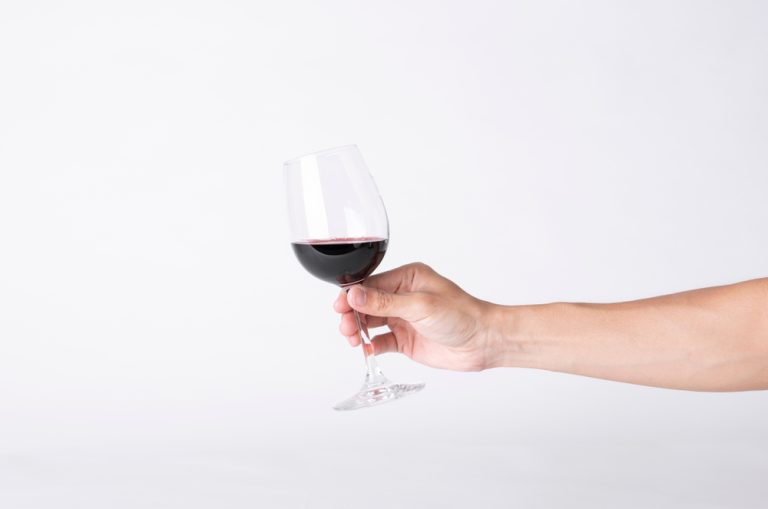
In medical detox, you receive around-the-clock care from doctors and nurses to help prevent and treat alcohol withdrawal symptoms and their complications. This can set you up for a safe and effective detox and put you in a good position to continue your recovery in rehab. An alcohol taper can be effective in beginning recovery and help set a realistic goal for those http://www.54e.ru/desk/beauty-health/cosmetics/cosmetics_69849.html not ready to quit alcohol completely, but they’re not for everyone. Someone who has been drinking heavily for a long period may struggle with cravings and alcohol withdrawal symptoms, leading to relapse.
Tapering vs Cold Turkey

If you are already at risk of heart attacks or strokes because of conditions such as obesity or preexisting high blood pressure, monitor your blood pressure carefully. Stopping alcohol can be rewarding, but it’s not without challenges. You may face social pressure, ingrained habits, and emotional reliance on alcohol. Moreover, physical withdrawal can be challenging, and there’s also a phenomenon called the kindling effect to consider. Start by estimating how much you drink on a daily basis—and be honest with yourself. It can help to make use of standard drink measurements, as mentioned above.

Your Guide to Tapering Off Alcohol
- Because he is a member of a support group that stresses the importance of anonymity at the public level, he does not use his photograph or his real name on this website.
- Tapering off alcohol is a method of reducing your alcohol intake gradually.
- Alcohol treatment uses various methods to help with withdrawal and addiction.
- However, doing so without the guidance of a physician, can complicate tapering and ultimately delay when, if ever, sobriety is reached.
- Understanding the severity of alcohol withdrawal underscores the importance of seeking professional help and support when trying to wean off alcohol.
- Detoxing from alcohol can be dangerous if you don’t do it properly.
No matter where you are in your recovery journey, our team will be there every step of the way. Whether you’re a daily imbiber, heavy drinker, or frequent binge drinker, you’re likely to experience withdrawal symptoms when you quit. Unfortunately, there’s little to no evidence that tapering off reduces the effects of alcohol withdrawal, some of which can be severe or even life-threatening. Quitting with proper medical supervision may be more important than whether you stop gradually or all at once.
- In turn, you can suffer from increasingly severe withdrawal symptoms every time you try to stop drinking.
- Ria Health offers access to many of these tools, including prescription medications, recovery coaching, and online support groups—all through a HIPAA-compliant smartphone app.
- These medications are prescribed and managed by healthcare providers.
- This is why it’s always best to find some form of long-term support in sobriety.
- Find an accountability partner or someone you can call to keep you on track when you want to drink.
Alcohol vs. Drugs: Breaking Down the Debate on Alcohols Classification

Both methods allow the body to adjust gradually and reduce overall alcohol intake. These strategies should be implemented according to an individual’s specific needs and drinking https://www.ndrugs.com/?s=recovery%20food habits, under the guidance of a healthcare professional or addiction specialist. When done under medical supervision, tapering off alcohol has few downsides. However, tapering can sometimes be unsafe if you attempt to do so on your own without a doctor’s knowledge. For example, if you start to suffer from alcohol withdrawal symptoms despite an attempt to taper, your symptoms may worsen before you have the chance to seek medical attention.

High doses may be necessary to prevent death.15 Amounts given are based on the symptoms. Typically the person is kept sedated with benzodiazepines, such as diazepam, lorazepam, chlordiazepoxide, or oxazepam. The treatment aims to help relieve your symptoms, reduce the chance of complications and, if DTs are bad, save your life. Sedatives, usually benzodiazepines, are medications used to treat alcohol withdrawal and DTs.
What are the symptoms?
DT is characterised by a rapid fluctuation of consciousness and change in cognition occurring over a short period of time, accompanied by severe autonomic symptoms (sweating, nausea, palpitations and tremor) and psychological symptoms (i.e. anxiety) 6. The typical DT patient shows agitation, hallucinations and disorientation. The presence of disorientation differentiates delirium from alcoholic hallucinosis.
Open-label studies showed the efficacy of topiramate (50 mg bid or once a day) in reducing the incidence of AWS seizures 117 and symptoms 118. The ability of topiramate to produce an effect on multiple neurotransmitter systems represents the rationale for the use of topiramate in the treatment of AWS 119. Considering these preliminary data of topiramate in AWS, and its efficacy in promoting alcohol abstinence 116, 120, 121, topiramate too could represent an interesting pharmacological option for the treatment of AUD from AWS to long-term detoxification 105. Beta-blockers (e.g. atenolol) could be used to treat hyperarousal symptoms in patients with coronary artery disease 74. However, given their effect on tremors, tachycardia and hypertension, these drugs could mask AWS symptoms and should be considered only in conjunction with BZDs in patients with persistent hypertension or tachycardia 54. The administration of these drugs as monotherapy could mask AWS symptoms and reduce CIWA-Ar scores with a consequent reduction of the prescription of BZDs and possible risk to develop complicated AWS.
- The main advantages are represented by its antagonist effect on the NMDA receptor, by GABAA stimulation, and by its short duration of effect, that allows a rapid evaluation of patient’s mental status after discontinuation 71, 72.
- However, the patient recognizes the hallucinations as unreal, as dysperceptions, and maintains a clear sensorium 26.
- There are a whole range of symptoms, including both physical and psychological issues.
- If you drink enough alcohol to be considered a heavy drinker (especially if you’ve done it for 10 years or more), and you want to stop completely, talk to your doctor.
- Ambulatory withdrawal treatment should include supportive care and pharmacotherapy as appropriate.
- Even with treatment, one of the possible complications of DTs is death.
Assessment of Delirium
However, the risk of death has reduced significantly since doctors began treating DT with benzodiazepines. This article overviews AWS and DT, including the causes and symptoms. It also provides information on diagnosing, treating, and preventing DT, and outlines the possible complications of the condition. Delirium tremens is a serious condition that develops due to alcohol withdrawal. People who consume large amounts of alcohol for an extended period can be susceptible to this withdrawal effect. Additional evaluation of a patient with DT involves identifying electrolyte, nutrition, and fluid abnormalities.
The symptoms can begin several days after abruptly decreasing or stopping after a prolonged time of consuming a high amount of alcohol. In addition to the management of alcohol withdrawal, you may also need treatment for specific effects of delirium tremens. If you drink large amounts of alcohol every day or almost every day, withdrawal symptoms can begin a few days after you stop drinking.
Delirium Tremens Causes and Risk Factors
The direct effect of these measures will be, in most of cases, a strong physician-patient relationship. The latter solution-focused therapy worksheets pdf is necessary to improve patient’s disposition toward medical management and to start a long-term, multidisciplinary treatment of alcohol dependence. SMO has been approved in some European countries for the treatment of alcohol withdrawal syndrome (AWS) and for relapse prevention and maintenance of abstinence.
However, the symptom-triggered regimen has been shown to reduce total BZD consumption and treatment duration with respect to fixed-dose in patients at low risk for complicated AWS 53. Without prompt treatment, the condition can result in severe complications, including death. AWS and DT are signs a person developed severe alcohol use disorder (AUD). You may be able to prevent relapse by getting treatment for alcohol use disorder. You can learn techniques, take medication, and get support and professional direction as you try to manage this condition. People who experience delirium tremens have a mortality rate of 8% per year.
English author George Eliot provides a case involving delirium tremens in her novel Middlemarch (1871–72). Alcoholic scoundrel John Raffles, both an abusive stepfather of Joshua Riggs and blackmailing nemesis of financier Nicholas Bulstrode, dies, whose «death was due to delirium tremens» while at Peter Featherstone’s Stone Court property. Housekeeper Mrs. Abel provides Raffles’ final night of care per Bulstrode’s instruction whose directions given to Abel stand adverse to Tertius Lydgate’s orders. Alcohol also inhibits the action of NMDA receptors by acting as a receptor antagonist. It inhibits the action of glutamate, which is an excitatory amino acid. Abrupt discontinuation of alcohol causes an increase in the action of glutamate, resulting in profound excitatory action.